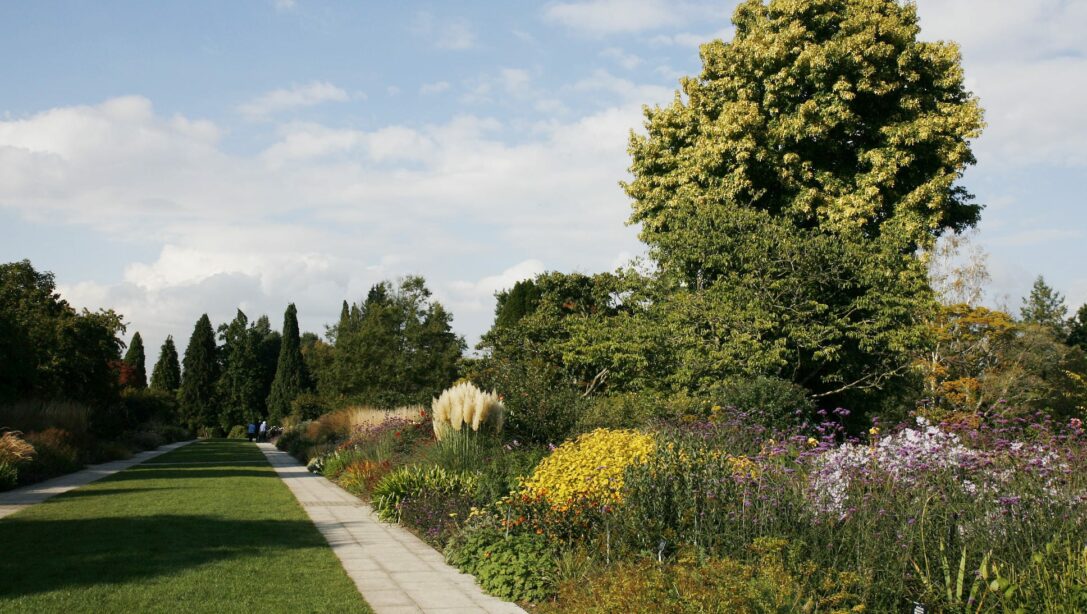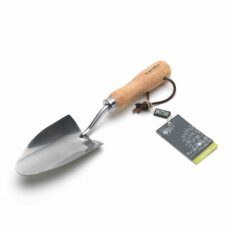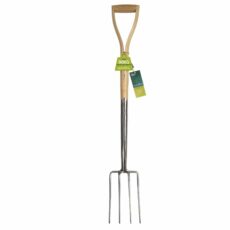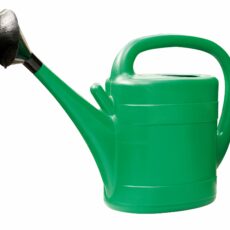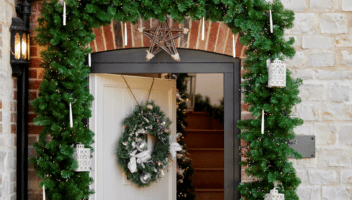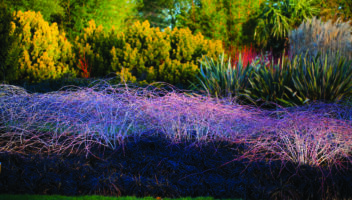A well-planned herbaceous border can provide constant blooms from March through October and beyond. The trick is to plant a variety of perennials that flower in succession, like a well-orchestrated symphony. When it comes to planting your blooming herbaceous borders, a bit of planning can make all the difference.
When we plant in the spring, we are planting for immediate effect and also with an eye on the future. By planting a range of herbaceous perennials, you can enjoy blooms all the way to October or beyond, frosts permitting.
View our collection of plants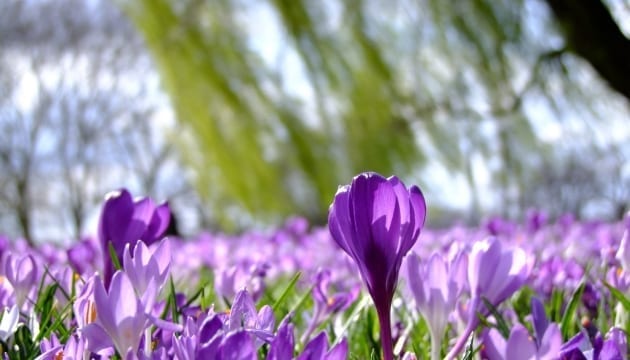
Image: A vibrant sea of Crocus, signalling the start of spring
First Flowers of Spring
Early spring flowers, such as Crocus, Daffodils and Hyacinths, are often planted in a blooming border as bulbs in the autumn. If you missed this, or want to add more life, you can find container-grown versions in early spring to get you started right away. Spring-flowering Hellebores are another favourite. Helleborus ‘Madame Lemonnier’ has glossy, deep-green foliage and nodding, dusky-pink flowers that really stand out, bringing much-needed early spring colour.
The massed purple blooms of Campanula ‘Catharina’ show themselves in April, and Peonies and Lupins start to push through the soil, ready to burst into flower in May. Aquilegia, also known as ‘Granny’s Bonnet,’ is another great choice, with a long flowering period and attractive seed heads that still look good when the flower is over.
Image: the bright summer colours of Rudbeckia ‘Little Goldstar’
Summer Colour
As we move into June, the colour really starts to get going. The frothy white, pink and red of Astilbe; the soft blue and purple of Nepeta and Veronica; and the striking yellow and orange of Coreopsis, Geum and Gaillardia.
By now, later-flowering perennials are well on their way. Salvia, Delphinium and Achillea appear in July and later Rudbeckia, Gaura and Echinacea will come into their own, with many flowering well into the autumn. Rudbeckia ‘Little Goldstar’ is a fantastic plant – really floriferous with bright yellow, daisy-like flowers, attractive foliage and a tight, compact habit.
Finally, in August and September, the blooming border is dominated by Asters, Sedum and late-flowering Anemones.
Favourite Plants by Flowering Month
With so many fantastic herbaceous perennial plants available, your selection is a question of personal taste, with a mind to choosing blooms with different flowering times. Some of our favourites, by month they typically first flower, are:
March Crocus, Daffodils, Hyacinths, spring-flowering Helleborus
April Campanula, Peonies
May Aquilegia, Lupins
June Astilbe, Nepeta, Veronica, Coreopsis, Geum, Gaillardia
July Salvia, Delphinium, Achillea, Rudbeckia, Gaura, Echinacea
August Asters, Sedum, late-flowering Anemones.
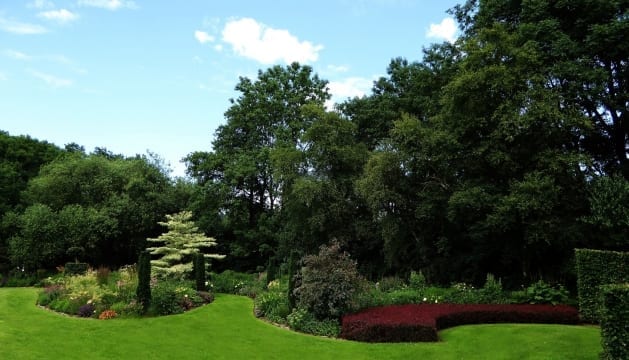 Image: Ornamental garden borders showing variety in height plus clever use of topiary spikes
Image: Ornamental garden borders showing variety in height plus clever use of topiary spikes
Planting for Structure
A herbaceous border can easily end up one-dimensional. All of these lovely flowers need some structure to show them off at their best.
Position tall plants, such as Verbena bonariensis, Crocosmia ‘Lucifer’, Delphinium and Foxgloves, at the back of your beds; place mid-height varieties such as Lychnis ‘Jenny,’ Sidalcea ‘Elsie Heugh’ and Peonies in front of them; and the low-growing plants such as Geranium, Erigeron ‘Kew Profusion’ and Dianthus, at the front of the border. You do need a decent-sized border to fit this range of plants in – at least four or five feet of space.
Plant supports are very useful for any taller perennials and also for those with heavy flowers that tend to bend the stems over, such as Peonies. Plant supports can be functional and designed to blend into the background of the garden, or they can be more decorative, such as poppy head stakes or shepherd’s crooks.
Another way to add height and structure to the blooming border is with obelisks for climbers such as Clematis or annuals such as Sweet Peas.
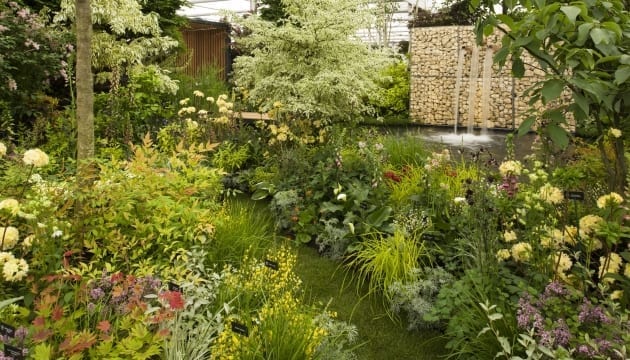
Image: Bright informal borders as part of Hillier’s gold-medal winning Chelsea Flower Show 2016 garden
Foliage and Flower Colour
Some perennial plants offer amazing structural foliage as well as flower colour. Acanthus spinosus, also known as ‘Bear’s Breeches’, has large, deeply-divided, spiny leaves. Ligularia ‘Desdemona’ has clumps of rounded, dark green leaves with red-purple undersides. Cynara cardunculus, the cardoon, has tall stems with striking silver-grey thistle-like foliage.
Shrubs within a herbaceous border can also provide great structure as well as year-round interest when perennials lie dormant. Roses and Lavender are classic choices, but a juxtaposition of formal and informal can work superbly.
Try clipped topiary balls or pyramids, perhaps in containers placed in the border, as the backdrop for your less formal herbaceous planting. A great topiary plant is Ilex crenata ‘Dark Green’. It is an alternative to traditional Box, which sadly suffers from box blight. It is easy to clip into shape, with dense, glossy, dark green foliage. Topiary may appear to require a lot of upkeep, but if you plant ready-clipped shapes, they only require a once- or twice-yearly trim with a pair of shears.


